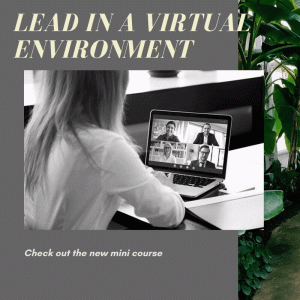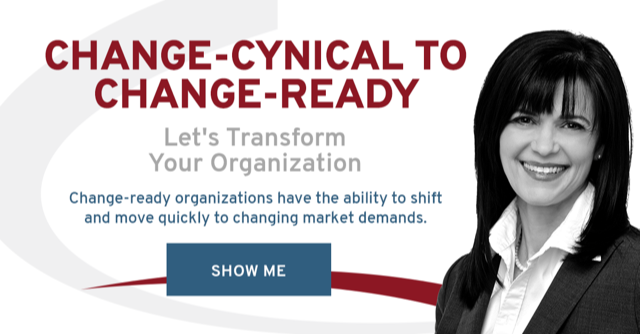Have you ever had a conversation that seem to be going well and then it wasn’t? It could have been with a colleague, your boss, a team member, an employee or even your best friend. If you answered yes, you’re not alone, it’s happened to all of us.
Maybe it was that conversation that escalated into an argument, or you felt like you were talking in circles or worse you felt like you and the other person were in two completely different conversations. Regardless, you’re left wondering — what happened?
The good news is you can bring these conversations back from the brink of a full communication breakdown. The better news is, with a willingness to engage in real conversations that require you to listen differently, you can prevent them from happening in the first place.
Danger Sudden Communication Desert: Maintain Active Listening and Emotional Connection to Avoid The Communication Desert
A colleague was asked to take on a new and challenging responsibility. One that required him to step out of his comfort zone, work differently, and lead in an area he hadn’t led before.
The conversation was going well. And then, it entered a space I call the communication desert. Our entry into the desert had been so subtle that I didn’t notice when it happened. But now as I listened—it was clear we were stranded in the middle of a communication desert. 
The communication desert is that space where two or more people are talking, words are being exchanged, heads nod, but you’re not having a conversation. Once you enter the communication desert the opportunity for new insights, problem-solving, and moving forward ceases.
My first thought was; How do I get us out of the desert? My second thought was: How did it happen?
Before I share the answer to both of those questions it will be helpful to explore a little more of the difference between communication and conversation—real conversation.
Conversation Versus Communication
Today, communication has come to mean giving information. In my experience, when a leader says she has communicated or had a conversation with her team she usually means she as given them information.
For example you host a town hall meeting or a team meeting to present a new idea. At the end of the presentation you ask: Are there any questions? You answer their questions and it appears you have had a conversation. Judith Glaser, author of Conversational Intelligence, calls this type of conversation a positional conversation. In a positional conversation our focus is on giving information to persuade the other person or group to accept our idea.
Real conversations are different. Real conversations are interactive, dynamic, and they create the opportunity for new insights and learning. I have advocated for a long time about the need and value of real conversation to enable change. Judith Glaser calls this type of conversation transformational.
A real conversation isn’t always easy. Yet, it is one of the most powerful tools for enabling healthy sustainable change and creating and maintaining high performance.
Navigating Yourself Out of The Communication Desert
Alright, so you have found yourself, like me, in the communication desert. Now what. The first step is to recognize when you have entered that dreaded space. In my case there were three key signs we had stopped having a real conversation and were simply exchanging words.
First, I was defending my position. Second, my frustration (at him not accepting my position) had led me to stop being curious about his perspective. Third, the tone and volume of the “conversation” had changed.
Once I recognized we were in the desert, I needed to navigate a way out. I would like to say I immediately and expertly navigated us out of the desert. I would like to say that, but I didn’t. However, I did know that we needed to end this exchange in a way that would allow us to have a real conversation. 
The easiest way to do that was for me to shift my perspective. Ok, it wasn’t that easy. Shifting my perspective meant I had stop trying to convince him I was right and trying to get him to see things from my perspective.
Shifting my perspective allowed us to end that “conversation” in a more productive place.
Although being able to navigate yourself out of the desert is helpful. It’s more helpful to be able to prevent yourself from entering. For that I needed to ask: What happened?
Active Listening is the Key to Avoiding a Communication Desert
The easy answer to the question of what happened would be to decide the conversation got off track because the other person was not listening. That would be the easy answer. It would also be incorrect and not helpful for two reasons.
First real conversations don’t go off track – because there isn’t a track. That doesn’t mean real conversations don’t have a purpose or achieve an outcome, they do. Rather than a track, real conversations have a flow and a rhythm. It is this flow that allows for the new insights and ideas.
Second, I had stopped listening. As a result we had moved from having a real conversation to defending, persuading, and telling the other person. Initially I didn’t know I had stopped listening. It wasn’t like I had checked out of the conversation. However, there is a difference between hearing the words another person is speaking and actively listening.
Psychiatrist and author of Just Listen Dr. Mark Goulston, states that to actively listen we need to rewire our brain. That’s because our ability to actively listen, especially if we think we know the person, is being impeded by our perception of the person or group. And our perception is based on our previous experience or encounters with the individual.
Once we form a perception, and it happens almost instantaneously and unconsciously, it gets hard-wired into our brain through our words. These words then act like a filter and impede our ability to listen in the present moment. How many times, have you heard yourself say, as you see an employee coming to talk to you, “here comes _________, they are… (difficult, resistant to change, unreliable, etc.). In that moment, before the conversation has started, you have lost the ability to actively listen.
The key is to get rid of the filter. Dr. Goulston states,” the stuff you think you already know about someone … is in reality blocking out what you need to know.”
Active listening will allow you to avoid the communication desert. It is the process of engaging and connecting in the present moment. To do this we need to be willing to let go of our assumptions and get curious in order to uncover the meaning and intent of what the person or group is saying. Instead of assuming we already know.
Three strategies to help you become an active listener
- Check-in with your own narrative and perceptions about the person or group. Recognize and challenge the words you use to describe the person or group.
- Check-in, stay attuned and be curious about your own emotions.
- Stay present. What they did or said yesterday doesn’t define who they are today.




